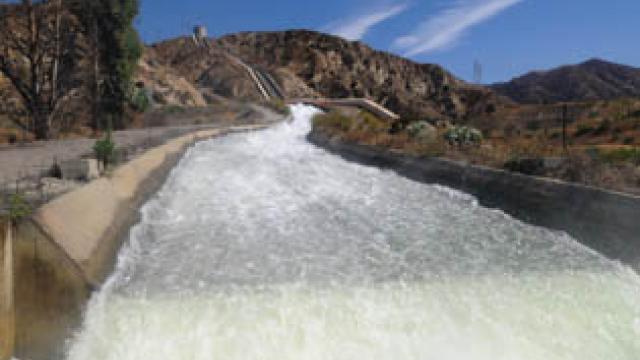El Pueblo
There is no doubting the importance of the delivery of water in Los Angeles, a semi-arid desert region with very little native water. In fact, the growth of Los Angeles is intricately linked to the history of the Los Angeles Department of Water and Power.
Los Angeles is no longer a one-horse town but it is a one-river town - or, at least, it used to be. That river is the Los Angeles River. Spanish explorers discovered it in 1769 and with prophetic vision said that the area surrounding it "has all the requisites for a large settlement." Their prediction was made seven years before the Declaration of Independence was signed. They were right.
Founded in 1781, Los Angeles grew from a humble pueblo founded into the second largest city in the United States. This Spanish pueblo (which officially became Los Angeles in 1850) first relied on the Los Angeles River for its water supply. The river water was channeled through a distribution system of crude dams, water wheels, and ditches (or zanjas). It wasn’t until 1860 that the city of Los Angeles’ Water Company completed its first water system. On Feb. 3, 1902, the city formally took ownership of the first Los Angeles municipal water works system.
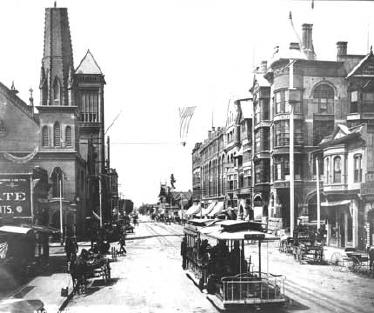
Eastern Sierra
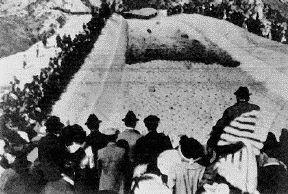
The population of Los Angeles leaped from 5,728 in 1870 to 102,479 by 1900. Along with inherent growth problems, the city faced a serious water shortage. The new municipal Water Department (Department), under the leadership of William Mulholland, its first superintendent and chief engineer, began enlarging the Los Angeles River system. Greater storage capacity was provided to conserve a large portion of the river's flow. Construction of new reservoirs and distribution mains provided added capacity and efficiency for the system. Conservation efforts were initiated at this early date with the installation of meters to discourage wasteful use of water.
A man of vision, Mulholland met the challenge of fulfilling the water needs of the thirsty, growing city by looking north. Under direction of then Mayor Fred Eaton, Mulholland conceived of an engineering marvel: a plan to build an aqueduct system that would transport water from the Eastern Sierra mountains to Los Angeles, using gravity to keep the water flowing.
That plan, was met with support by the citizens who, in 1905, voted a bond issue of $1.5 million to purchase Owens Valley lands and water rights. Two years later, voters approved another bond issue of $23 million for construction of a 233-mile long aqueduct.
Under Mulholland’s leadership, an army of 5,000 men labored for five years. He successfully completed, within the original time and cost estimates, the most difficult engineering project undertaken by any American up to that time. Mulholland's dream was realized when water from the Eastern Sierra Nevada came gushing down the cascades into the Los Angeles Basin. The first aqueduct water was presented to the people of Los Angeles on November 5, 1913. In a spectacular civic ceremony at the north end of the San Fernando Valley where the aqueduct terminates, William Mulholland said with characteristic brevity and modesty: "There it is: take it." And that is exactly what Los Angeles citizens have done.
Without the additional water supply delivered by the aqueduct, Los Angeles could never have grown beyond 500,000 people. That was the maximum population that local supply sources could support. And, in periods of lower rainfall, which can occur in cycles, the use of water would have had to be rigidly restricted to avert disastrous consequences.
As the Los Angeles population grew by leaps and bounds, the Department built a 177-mile second aqueduct from the Owens Valley, completed in 1970, which had capacity to bring an additional annual flow of 152,000 acre feet to Los Angeles.
With that precious resource flowing by gravity to Los Angeles, the city grew from a town of 100,000 population to more than 3 million during the 20th century. In the same time, the city’s water supply has progressed from a small system that included open ditches to one of the largest city water supply systems in the nation.
William Mulholland
An Irish Explorer Sails to California
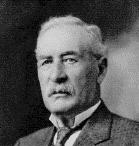
Who was William Mulholland? The man who gave 50 years of meritorious service to the citizens of Los Angeles achieved a distinction unprecedented in the history of water development and water works construction. He was born in Belfast, Ireland, on September 11, 1855, where he attended school until he was 15 years old. Then, with the insatiable search for knowledge and experience that motivated him throughout his life, he left home to see the world. He sailed the seas as an apprentice for several years, then worked on the Great Lakes and in the lumber camps of Michigan until 1876, when he went to live with his uncle who owned a dry goods store in Pittsburgh. It was there that he read Nordhoff's "History of California," which fired him with an ambition to see the wonderland.
Because of his love of the sea, he decided to make the long voyage by ship. To save the $25 in gold that was charged for railroad transportation across the isthmus of Panama, he chose to walk the 47 mile distance from Colon to Balboa. This was an indication, perhaps, of the ingrained sense of thrift and values that enabled him later to complete the largest and most challenging aqueduct of its time for less than the amount of money that the people of Los Angeles had authorized to be spent for the project.
He worked his passage as a member of the crew on a ship bound for San Francisco and sailed through the Golden Gate in February 1877. Shortly thereafter he was headed on horseback for his adopted city - Los Angeles - and for a destiny such as befalls few men.
Only the highlights of his accomplishments have been described. A volume could be filled with accounts of his engineering and construction achievements; another with anecdotes showing his good humor and friendliness for his fellow man; another to list his proficiency in the arts and sciences. Impressive as this may sound, it is the story of a man who rubbed shoulders with sailors and laborers and never lost the common touch while rising to the top of his profession.
His remarkable character is summed up in a tribute from one of his associates in the engineering profession, who described him in these words:
"A man with a mind remarkable for its breadth and brilliant wit. A man who can build an aqueduct, a man who can also, beside a mountain campfire, while he broils his trout, discourse on profound structural geology. A man whose life has been spent in public service for the benefit of the masses in the land of his adoption. Remarkable for his originality of thought and analysis, yet equally active in the practical application of these ideals. Original in the minute details of construction, yet brave to the limit of conceiving and assuming the responsibilities of the greatest projects. Kind, generous and true to the public welfare, he stands an example of what the applied scientist can do for his state when he holds his brief for the people."
Water is the life-blood of every community. The man who did more than any other to furnish that vital element to Los Angeles is William Mulholland, who for many years was chief engineer and general manager of the city-owned Bureau of Water Works and Supply (now the Water System of the Los Angeles Department of Water and Power). He died in 1935 but his work lives on. Every time a faucet is turned the water it releases is a reminder of the man whose life was devoted to public service.
City of Dreams
The courses of Los Angeles, the city, and William Mulholland, the man, were singularly parallel. Each had a modest beginning. From a small group of intrepid settlers the pueblo passed through various stages of development, making its own way against almost every conceivable obstacle to become the international city of today.
It was in those early pioneer days that William Mulholland, youthful, vibrant with life and eager for work, became a humble ditch tender. From books borrowed, or those purchased with part of his meager income, he garnered knowledge. His native intellectual ability, augmented by intensive study, began to be recognized. By his own efforts he passed from ditch tender to straw boss, to foreman, to superintendent. Eventually, he became a figure of international fame in the fields of engineering and community building.
It was 1877 when William Mulholland rode into Los Angeles on horseback after an exciting trip through the San Joaquin valley from San Francisco. Years later he wrote: "Los Angeles was a place after my own heart. The people were hospitable ... The country had the same attraction for me that it had for the Indians who originally chose this spot as their place to live. The Los Angeles River was a beautiful, limpid little stream with willows on its banks ... It was so attractive to me that it at once became something about which my whole scheme of life was woven. I loved it so much."
One sees proof of Mulholland’s devotion through his lifetime of service to the water needs of his adopted city. At the start of his career, one of the principal water ditches picked up the flow of the Los Angeles River at a point opposite Griffith Park and carried water to a reservoir in Elysian Park. Young Mulholland's job was to keep this open water carrier in as good condition as possible. While performing this duty, and until 1881, he lived in an old house at the corner of what is now one of the city's most beautiful intersections - Los Feliz Boulevard and Riverside Drive, a major entrance to Griffith Park. After doing his day's work Mulholland would study textbooks on mathematics, hydraulics, geology and other subjects that he later put to practical use. For recreation he read the classics of literature and from his amazing memory could quote freely from the world's greatest authors. He was later to marry and have five children.
An Engineer with a Vision
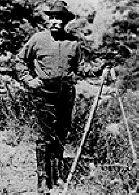
The Spanish explorers’ vision of Los Angeles as a land of promise came to fruition through the resourcefulness of the pioneers who followed. High on the list of these stalwarts is William Mulholland.
Perhaps most notably, Mulholland was the first American engineer to utilize hydraulic sluicing to build a dam. That dam was built at Silver Lake Reservoir in 1906 and served for almost 70 years. It was a new construction idea that attracted nationwide attention. Government engineers adopted the method in building Gatun Dam in the Panama Canal Zone.
Mulholland is best known for building the Los Angeles Owens River Aqueduct (now known as the Los Angeles Aqueduct); an engineering marvel of steel pipes and concrete conduits that would far surpass the capacity of the local "river." The Los Angeles Aqueduct stretches 233 miles from the Owens River to Los Angeles, serving people, business and industry with high-quality mountain water that springs from the icy streams and crystal lakes fed by the snows of the lofty Eastern Sierra Nevada. The arrival of Eastern Sierra water changed L.A.’s future forever.
William Mulholland had boundless confidence in the destiny of Los Angeles and its neighboring communities. This faith was corroborated by the skyrocketing growth of the area in the decade following completion of the aqueduct from the Owens Valley. By 1923, the influx of population from all parts of the nation had exceeded even the most optimistic earlier estimates. In 1940, the extension of the aqueduct system to tap the water of the Mono Basin was completed.
Foreseeing the need for yet another water supply source, the veteran Mulholland, then 68 years of age, personally initiated the Department of Water and Power's six-year survey of 50,000 square miles of desert that resulted in the route ultimately selected for the Colorado River Aqueduct. This great project, in which Los Angeles and 12 other Southern California cities united to form the Metropolitan Water District (MWD), now serves more than 130 communities in six Southern California counties. In 1941, the first water from the newly completed Colorado River Aqueduct was delivered to Los Angeles to meet the water needs of the growing city. William Mulholland did not live to see his greatest dream materialize. Other hands took up the work of that master builder and planner. Yet, generations unborn will have occasion to give thanks for his engineering skill and broad foresight.
Recommended reading about William Mulholland and the history of water in Los Angeles:
| William Mulholland and the Rise of Los Angeles By Catherine Mulholland |
The Water Seekers By Remi Nadeau |
| Vision or Villainy By Abraham Hoffman |
Cadillac Desert: The American West and Its Disappearing Water By Marc Reisner |
Water Today
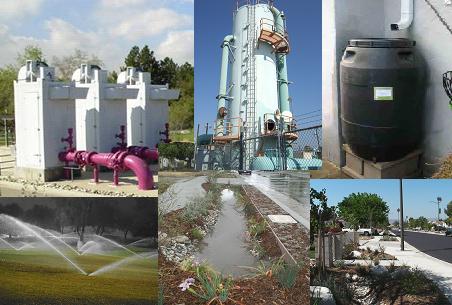
In 2009, a 3-year water supply shortage led the City of Los Angeles (City) to impose mandatory water conservation. The City residents responded with a remarkable water use reduction that resulted in 19 percent water savings between 2009 and 2010 compared to 2006 through 2007 water use levels. The City’s water conservation efforts have paid big water saving dividends over the years. While the annual demand growth in the pre-conservation period of the 1980’s averaged 1.7%, the forecast provided in the 2010 Urban Water Management Plan projects only a 1.0% average annual water demand growth rate over the next 25 years.
While conservation reduces water demand, the increasing population within the City can lead to demand increase. Southern California’s economy growth and ideal location and climate induces a constant influx of new residents, adding to the increasing demand for water. City population is estimated to grow to more than 4.4 million people and water demand to increase to 711,000 acre-feet by the year 2035.
In pursuit of alternatives to supplement the City’s local and imported water supplies, the water recycling program is being expanded. Recycled water is being used for the irrigation of golf courses, parks, freeway medians, large landscaped areas, and various industrial processes such as power plant cooling towers. Advanced treated recycled water is also planned for groundwater replenishment.
Stormwater capture is also pursued by the City to augment water supplies. LADWP has been implementing projects with other agencies and stakeholders to increase stormwater capture by enhancing existing centralized stormwater capture facilities and promoting distributed stormwater infiltration systems such as rain barrels and neighborhood recharge. The majority of stormwater runoff within the City is channeled into the ocean carrying pollutants that are harmful to marine life. In addition, increased hardscape due to urbanization has resulted in less infiltration of stormwater and a decline in groundwater elevations. Stormwater capture projects improve long-term groundwater reliability and generate other watershed benefits including increased water conservation, improved water quality, open space enhancements, and flood control.
Groundwater is the City’s primary source of local water supply. It has provided nearly 30% of the City’s total supply during water shortages when imported supplies become unreliable. In recent years, contamination has impacted the City’s ability to fully utilize its local groundwater entitlements. LADWP has planned to construct treatment facilities for the clean-up of the San Fernando Groundwater Basin to restore this valuable resource.
The City of Los Angeles continues working on maintaining a reliable source of supplemental water supply from the Metropolitan Water District of Southern California (MWD). MWD has been a reliable supplier of water to the City and is a critical part of our long-term water resources plan. However, MWD is facing with supply reliability challenges. Environmental and infrastructural issues have curtailed pumping from the San Francisco Bay-Delta for MWD’s State Water Project supply. A prolonged dry period beginning in 1999 on the Colorado River system, and Arizona and Nevada using their full apportionment of Colorado River water are also issues associated with MWD’s Colorado River Aqueduct water.
Finally, the City’s environmental efforts in the Eastern Sierra Nevada have been productive. Today, projects have addressed air quality problems at Owens Lake, while the Mono Lake ecosystem is healthier than it’s been in nearly 50 years. Moreover, the Lower Owens River Project established a warm-water fishery in a 60-mile portion of a previously dried river terrain. Other ongoing enhancement projects continue as part of the City’s commitment to the environment of the area from which much of the City’s imported water supplies originate.
